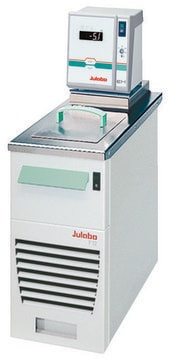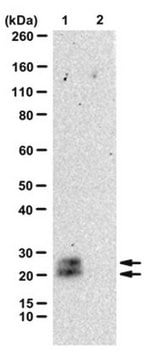05-659
Anti-Kaiso Antibody, clone 6F
clone 6F, Upstate®, from mouse
About This Item
Prodotti consigliati
Origine biologica
mouse
Livello qualitativo
Forma dell’anticorpo
purified antibody
Tipo di anticorpo
primary antibodies
Clone
6F, monoclonal
Reattività contro le specie
mouse, hamster, chicken, canine, rat, human, monkey
Produttore/marchio commerciale
Upstate®
tecniche
electrophoretic mobility shift assay: suitable
immunohistochemistry: suitable
immunoprecipitation (IP): suitable
western blot: suitable
Isotipo
IgG1
N° accesso NCBI
N° accesso UniProt
Condizioni di spedizione
dry ice
modifica post-traduzionali bersaglio
unmodified
Informazioni sul gene
human ... ZBTB33(10009)
Specificità
Immunogeno
Applicazioni
Epigenetics & Nuclear Function
Transcription Factors
Qualità
Immunohistochemistry: As shown by an independent laboratory, 1μg/ml of this antibody gave positive nuclear immunostaining for Kaiso in NIH 3T3 cells fixed with 100% methanol (Daniel, 2001; Daniel, 1999).
Immunoprecipitation: As shown by an independent laboratory, 2-5μg of this antibody immunoprecipitated Kaiso from RIPA lysates from NIH 3T3 cells (Daniel, 1999; Prokhortchouk, 2001).
Supershift: As shown by an independent laboratory, this antibody will supershift a specific methyl-CpG complex (Prokhortchouk, 2001).
Descrizione del bersaglio
Stato fisico
Stoccaggio e stabilità
Risultati analitici
Positive Antigen Control: Catalog #12-305, 3T3/A31 lysate. Add 2.5 μL of 2-mercapto-ethanol/100 μL of lysate and boil for 5 minutes to reduce the preparation. Load 20 μg of reduced lysate per lane for minigels.
Note legali
Esclusione di responsabilità
Not finding the right product?
Try our Motore di ricerca dei prodotti.
Codice della classe di stoccaggio
10 - Combustible liquids
Classe di pericolosità dell'acqua (WGK)
WGK 1
Certificati d'analisi (COA)
Cerca il Certificati d'analisi (COA) digitando il numero di lotto/batch corrispondente. I numeri di lotto o di batch sono stampati sull'etichetta dei prodotti dopo la parola ‘Lotto’ o ‘Batch’.
Possiedi già questo prodotto?
I documenti relativi ai prodotti acquistati recentemente sono disponibili nell’Archivio dei documenti.
Il team dei nostri ricercatori vanta grande esperienza in tutte le aree della ricerca quali Life Science, scienza dei materiali, sintesi chimica, cromatografia, discipline analitiche, ecc..
Contatta l'Assistenza Tecnica.







